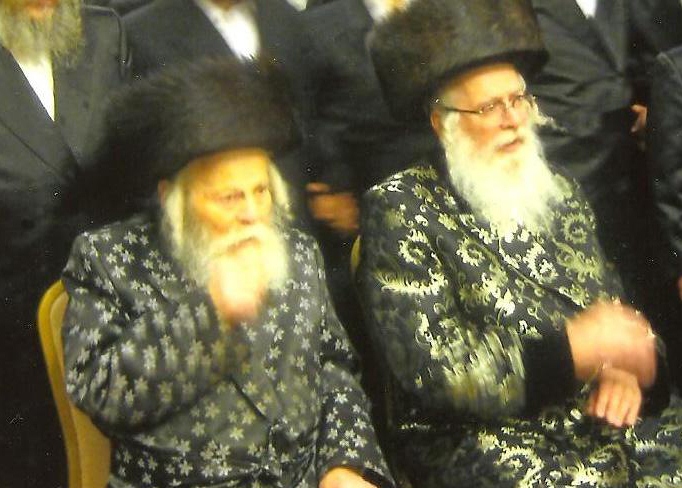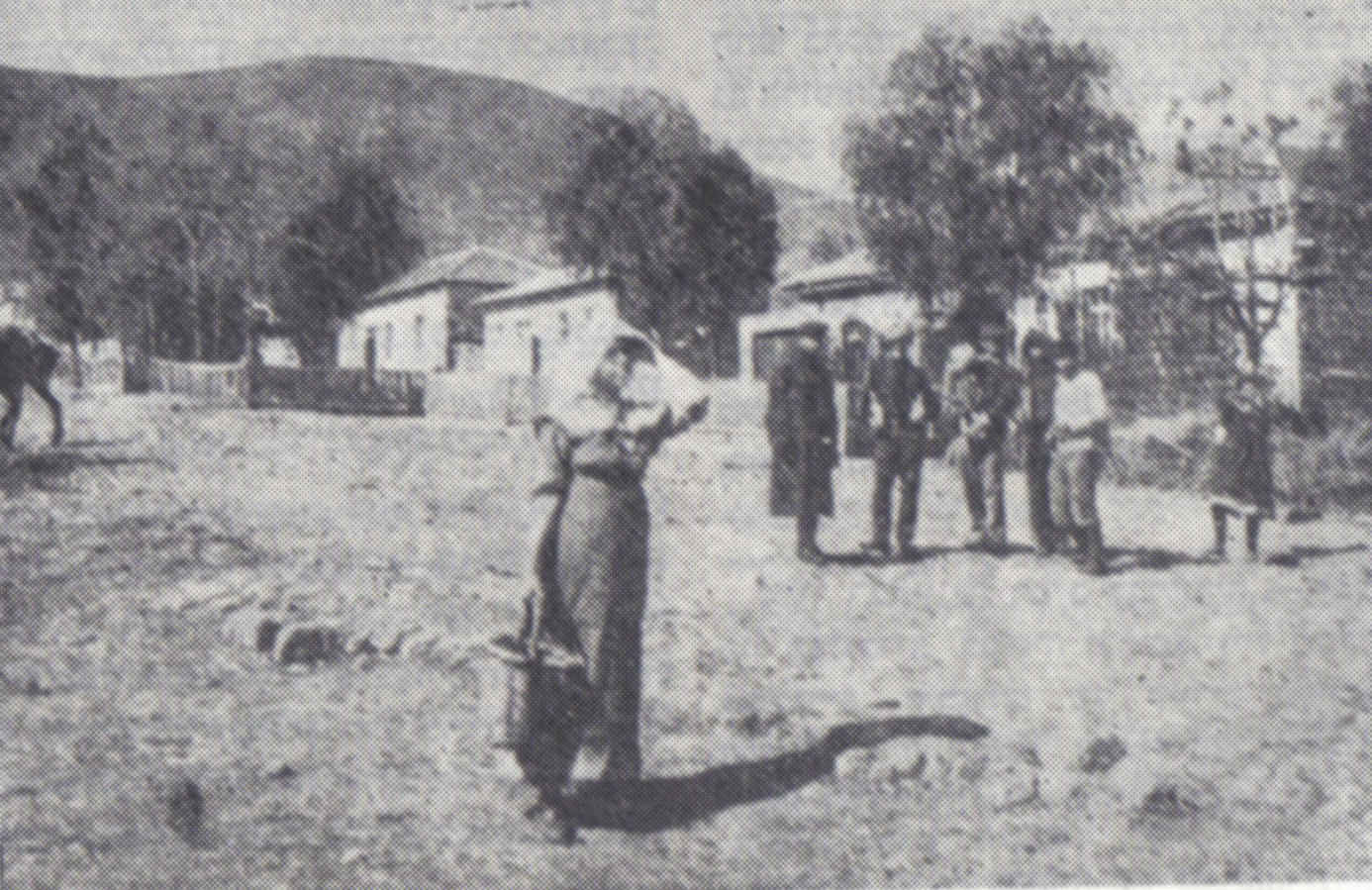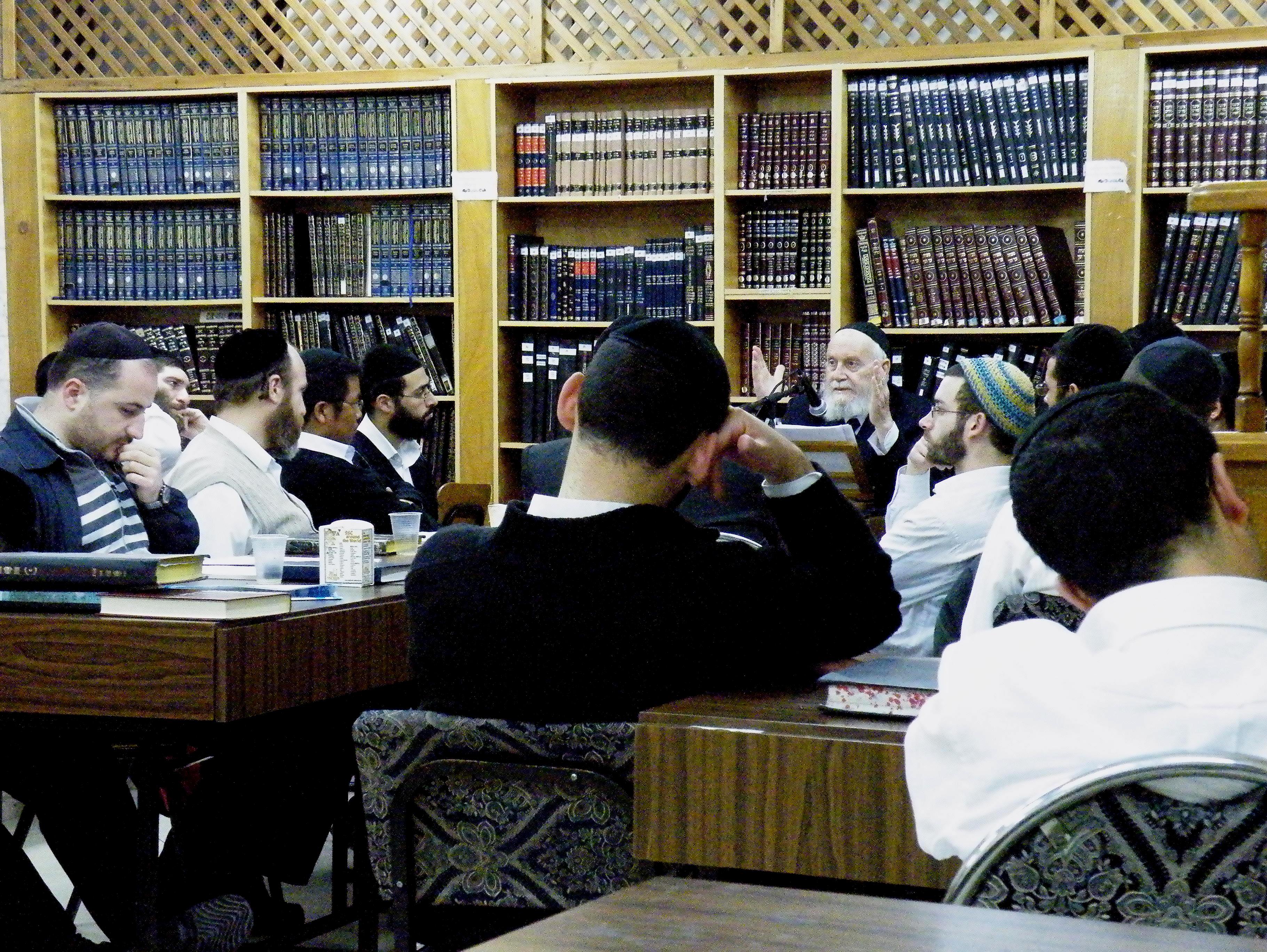|
Eliezer Shlomo Schick
Eliezer Shlomo Schick (May 29, 1940 – February 6, 2015), also known as Mohorosh (acronym for ''Moreinu HaRav Eliezer Shlomo'', "Our teacher, our rabbi, Eliezer Shlomo", מוהרא"ש מברסלבGantz, Nesanel. "Mohorosh – The Tzaddik of Yavne'el". ''Ami'', February 11, 2015, pp. 30-31.) was a Hasidic rabbi and prolific author and publisher of Breslov teachings. He wrote and disseminated approximately 1,000 different pamphlets based on the teachings of Rebbe Nachman of Breslov. He was the founder and leader of the self-styled "Breslov City" in the Galilee town of Yavne'el, Israel, and had thousands of Hasidim around the world. Early life Eliezer Shlomo Schick was born in Jerusalem, Mandatory Palestine, to Rabbi Menachem Zev, the '' gaavad'' (head of the rabbinical court) of Tokay, Hungary, and his wife Malka. As a young boy, he learned in the Etz Chaim cheder. When he was a youth, his family relocated to New York City, where he studied in the Kashau yeshiva and then ... [...More Info...] [...Related Items...] OR: [Wikipedia] [Google] [Baidu] |
Yavne'el
Yavne'el ( he, יַבְנְאֵל, ar, يفنيئيل) is a moshava and local council in the Northern District of Israel. Founded in 1901, it is one of the oldest rural Jewish communities in the country. According to the Israel Central Bureau of Statistics (CBS), in it had a population of . In 2008 the population had been of 3,100, with a growth rate of 1.4%. History Archaeological overview Remains from the Late Bronze Age,Leibowitz 1995, cited in Hanna, 2017 Yavne’el/ref>Brink, van den, 2017 Yavne’el, Tel Yin’am/ref> Iron Age I–II, Persian, Hellenistic, Roman, late Byzantine,Hanna, 2009Yavne’el/ref> early MuslimHanna, 2017 Yavne’el/ref> and Mamluk periods have been found here. A residential building constructed in the Umayyad period that continued to be inhabited during the Abbasid period (eighth–tenth centuries CE) has been excavated here. Remains from the Mamluk period have also been found. Ottoman period Arab village During the Ottoman period the Muslim ... [...More Info...] [...Related Items...] OR: [Wikipedia] [Google] [Baidu] |
Cheder
A ''cheder'' ( he, חדר, lit. "room"; Yiddish pronunciation ''kheyder'') is a traditional primary school teaching the basics of Judaism and the Hebrew language. History ''Cheders'' were widely found in Europe before the end of the 18th century. Lessons took place in the house of the teacher, known as a ''melamed'', whose wages were paid by the Jewish community or a group of parents. Normally, only boys would attend classes—girls were educated by their mothers in their homes. Where money was scarce and the community could not afford to maintain many teachers, boys of all ages would be taught in a single group. Although traditionally boys start learning the Hebrew alphabet the day they turned three, boys typically entered ''cheder'' school around the age of 5. After learning to read Hebrew, they would immediately begin studying the Torah, starting with the Book of Leviticus. They would usually start learning the Mishnah at around seven years of age and the Talmud (Mishna ... [...More Info...] [...Related Items...] OR: [Wikipedia] [Google] [Baidu] |
Israel Studies Review
The ''Israel Studies Review'' is a peer-reviewed academic journal published on behalf of the Association for Israel Studies by Berghahn Books and covering the study of all aspects of society, history, politics, and culture of Israel Israel (; he, יִשְׂרָאֵל, ; ar, إِسْرَائِيل, ), officially the State of Israel ( he, מְדִינַת יִשְׂרָאֵל, label=none, translit=Medīnat Yīsrāʾēl; ), is a country in Western Asia. It is situated .... The journal was previously known as the ''Israel Studies Bulletin'' from 1992 to 2001 and as the ''Israel Studies Forum'' from 2001 to 2010. The editors of the journal since summer 2021 are Oded Haklai (Queen's University, Ontario, Canada) and Adia Mendelson-Maoz (The Open University of Israel, Israel). Rami Zeedan (University of Kansas, Kansas, USA) is the journal's book review editor. Abstracting and indexing The journal is abstracted and indexed in: References External links * {{Official w ... [...More Info...] [...Related Items...] OR: [Wikipedia] [Google] [Baidu] |
The Forward
''The Forward'' ( yi, פֿאָרווערטס, Forverts), formerly known as ''The Jewish Daily Forward'', is an American news media organization for a Jewish American audience. Founded in 1897 as a Yiddish-language daily socialist newspaper, ''The New York Times'' reported that Seth Lipsky "started an English-language offshoot of the Yiddish-language newspaper" as a weekly newspaper in 1990. In the 21st century ''The Forward'' is a digital publication with online reporting. In 2016, the publication of the Yiddish version changed its print format from a biweekly newspaper to a monthly magazine; the English weekly paper followed suit in 2017. Those magazines were published until 2019. ''The Forward''s perspective on world and national news and its reporting on the Jewish perspective on modern United States have made it one of the most influential American Jewish publications. It is published by an independent nonprofit association. It has a politically progressive editorial fo ... [...More Info...] [...Related Items...] OR: [Wikipedia] [Google] [Baidu] |
Hebrew (language)
Hebrew (; ; ) is a Northwest Semitic language of the Afroasiatic language family. Historically, it is one of the spoken languages of the Israelites and their longest-surviving descendants, the Jews and Samaritans. It was largely preserved throughout history as the main liturgical language of Judaism (since the Second Temple period) and Samaritanism. Hebrew is the only Canaanite language still spoken today, and serves as the only truly successful example of a dead language that has been revived. It is also one of only two Northwest Semitic languages still in use, with the other being Aramaic. The earliest examples of written Paleo-Hebrew date back to the 10th century BCE. Nearly all of the Hebrew Bible is written in Biblical Hebrew, with much of its present form in the dialect that scholars believe flourished around the 6th century BCE, during the time of the Babylonian captivity. For this reason, Hebrew has been referred to by Jews as '' Lashon Hakodesh'' (, ) since an ... [...More Info...] [...Related Items...] OR: [Wikipedia] [Google] [Baidu] |
Borough Park, Brooklyn
Borough Park (also spelled Boro Park) is a neighborhood in the southwestern part of the borough of Brooklyn, in New York City. The neighborhood is bordered by Bensonhurst to the south, Dyker Heights to the southwest, Sunset Park to the west, Kensington and Green-Wood Cemetery to the northeast, Flatbush to the east, and Midwood to the southeast. It is economically diverse, and home to one of the largest Orthodox Jewish communities outside Israel, with one of the largest concentrations of Jews in the United States, and Orthodox traditions rivaling many insular communities. As the average number of children in Orthodox and Haredi families is 6.72, Boro Park is experiencing a sharp growth in population. The neighborhood is part of Brooklyn Community District 12, and its primary ZIP Code is 11219. It is patrolled by the 66th Precinct of the New York City Police Department. Politically, it is represented by the New York City Council's 38th, 39th, and 44th Districts. History ... [...More Info...] [...Related Items...] OR: [Wikipedia] [Google] [Baidu] |
Hasidic Philosophy
Hasidic philosophy or Hasidism ( he, חסידות), alternatively transliterated as Hasidut or Chassidus, consists of the teachings of the Hasidic movement, which are the teachings of the Hasidic ''rebbes'', often in the form of commentary on the Torah (the Five books of Moses) and Kabbalah ( Jewish mysticism). Hasidism deals with a range of spiritual concepts such as God, the soul, and the Torah, dealing with esoteric matters but often making them understandable, applicable and finding practical expressions. With the spread of Hasidism throughout Ukraine, Galicia, Poland, and Russia, divergent schools emerged within Hasidism. Some schools place more stress on intellectual understanding of the Divine, others on the emotional connection with the Divine. Some schools stress specific traits or exhibit behavior not common to other schools. Most if not all schools of Hasidic Judaism stress the central role of the Tzadik, or spiritual and communal leader, in the life of the individual ... [...More Info...] [...Related Items...] OR: [Wikipedia] [Google] [Baidu] |
Shiur (Torah)
Shiur (, , lit. ''amount'', pl. shiurim ) is a lecture on any Torah topic, such as Gemara, Mishnah, Halakha (Jewish law), Tanakh (Bible), etc. History The Hebrew term שיעור ("designated amount") came to refer to a portion of Judaic text arranged for study on a particular occasion, such as a yartzeit, the dedication of a new home, or the evening of a holiday, and then to a public reading and explanation of the same. The act of teaching and studying these texts at the designated time was known in Yiddish as ''schiur lernen''. These shiurim would be attended by all classes of people; it was traditional for learned attendees to engage the lecturer in continuous discussion, and for the larger lay audience to listen intently. Concurrently, the word came to refer to the daily study quotient for students of a yeshiva, and then to the lecture given thereon. Akiva Eger, for example,would not miss learning a single ''shiur'' with the yeshiva. His ''shiurim'' with them were ... [...More Info...] [...Related Items...] OR: [Wikipedia] [Google] [Baidu] |
Kossoner Rav
Koson ( he, קוסון, yi, קאסאן) is a Hasidic dynasty originating in the village of Koson (also Kossyny or Kaszony) in Ukraine. The dynasty was founded by Rabbi Yehosef Rottenberg in 1897. History ''Bnei Shileishim'' Rabbi Yehosef Rottenberg was born in Halych in 1853 to Rabbi Tzvi Hirsh and Chaya Dreizya Rottenberg. He studied under Rabbi Chaim Halberstam of Sanz and Rabbi Yekusiel Yehuda Teitelbaum of Siget. Rabbi Yehosef married Rebbetzin Sara Yittel, the daughter of Rabbi Meshulim Feish Segal-Lowy I of Tosh and authored the ''sefer'' ''Bnei Shileishem'' (and is therefore sometimes referred to by its name). He settled in Koson in 1897 where he served as rebbe. After his death in 1911, he was succeeded as rebbe in Koson by his son, Rabbi Chaim Shlomo Rottenberg. ''Shmuah Tovah'' Rabbi Chaim Shlomo Rottenberg married Raitze, daughter of Rabbi Asher Yashaya Rubin of Kolbuszowa, Poland, and authored the ''sefer'' ''Shmuah Tovah''. In 1920 however, nine years afte ... [...More Info...] [...Related Items...] OR: [Wikipedia] [Google] [Baidu] |
Torah
The Torah (; hbo, ''Tōrā'', "Instruction", "Teaching" or "Law") is the compilation of the first five books of the Hebrew Bible, namely the books of Genesis, Exodus, Leviticus, Numbers and Deuteronomy. In that sense, Torah means the same as Pentateuch or the Five Books of Moses. It is also known in the Jewish tradition as the Written Torah (, ). If meant for liturgic purposes, it takes the form of a Torah scroll ('' Sefer Torah''). If in bound book form, it is called ''Chumash'', and is usually printed with the rabbinic commentaries (). At times, however, the word ''Torah'' can also be used as a synonym for the whole of the Hebrew Bible or Tanakh, in which sense it includes not only the first five, but all 24 books of the Hebrew Bible. Finally, Torah can even mean the totality of Jewish teaching, culture, and practice, whether derived from biblical texts or later rabbinic writings. The latter is often known as the Oral Torah. Representing the core of the Jewish spiri ... [...More Info...] [...Related Items...] OR: [Wikipedia] [Google] [Baidu] |
Hitbodedut
Hitbodedut or hisbodedus ( he, הִתְבּוֹדְדוּת, lit. "seclusion, solitariness, solitude"; Tiberian: ''hīṯbōḏăḏūṯ'' , Ashkenazi: ''hīsboydedēs/hīsboydedūs'' or ''hīsbōdedūs'', Sephardi: ''hitbōdedūt'') refers to practices of self-secluded Jewish meditation. The term was popularized by Rebbe Nachman of Breslov (1772–1810) to refer to an unstructured, spontaneous and individualized form of prayer and meditation through which one would establish a close, personal relationship with God and ultimately see the Divinity inherent in all being. Background Secluded meditation practices were encouraged by many medieval rabbis, such as Abraham Maimonides, Abraham Abulafia, Joseph Gikatilla, Moses de Leon, Moses Cordovero, Isaac Luria, and Chaim Vital. The founder of Hasidism, the Baal Shem Tov, encouraged his close disciples to find deveikus through ''hitbodedut and'' by meditating on the kabbalistic unifications (''yichudim'') of Isaac Luria. Rebbe N ... [...More Info...] [...Related Items...] OR: [Wikipedia] [Google] [Baidu] |
Alter Tepliker
Alter Tepliker was the sobriquet of Rabbi Moshe Yehoshua Bezhilianski ( 1919), a learned scholar and leading Breslover Hasid in Uman, Ukraine in the late 19th and early 20th centuries. Biography Born in Teplik, Ukraine, he became active in the Breslover community in nearby Uman, where he married the sister of Abraham Chazan. Chazan's father, Nachman Chazan, was the closest disciple of Reb Noson, who was in turn the closest disciple of Rebbe Nachman of Breslov. Breslover leaders of the following generation, such as Rabbis Shmuel Horowitz and Yitzchok Gelbach, attributed their initial interest in Breslov teachings to their first exposure to Alter Tepliker's ''Hishtafchut HaNefesh''. He fell victim to a Cossack pogrom during the Ukrainian struggle for independence in 1919. He was murdered in a synagogue while holding a sefer Torah. Publications Tepliker pioneered the publication of Breslover teachings on specific topics. His ten books include: * ''Hishtafchut HaNefesh'' (''Outpour ... [...More Info...] [...Related Items...] OR: [Wikipedia] [Google] [Baidu] |








